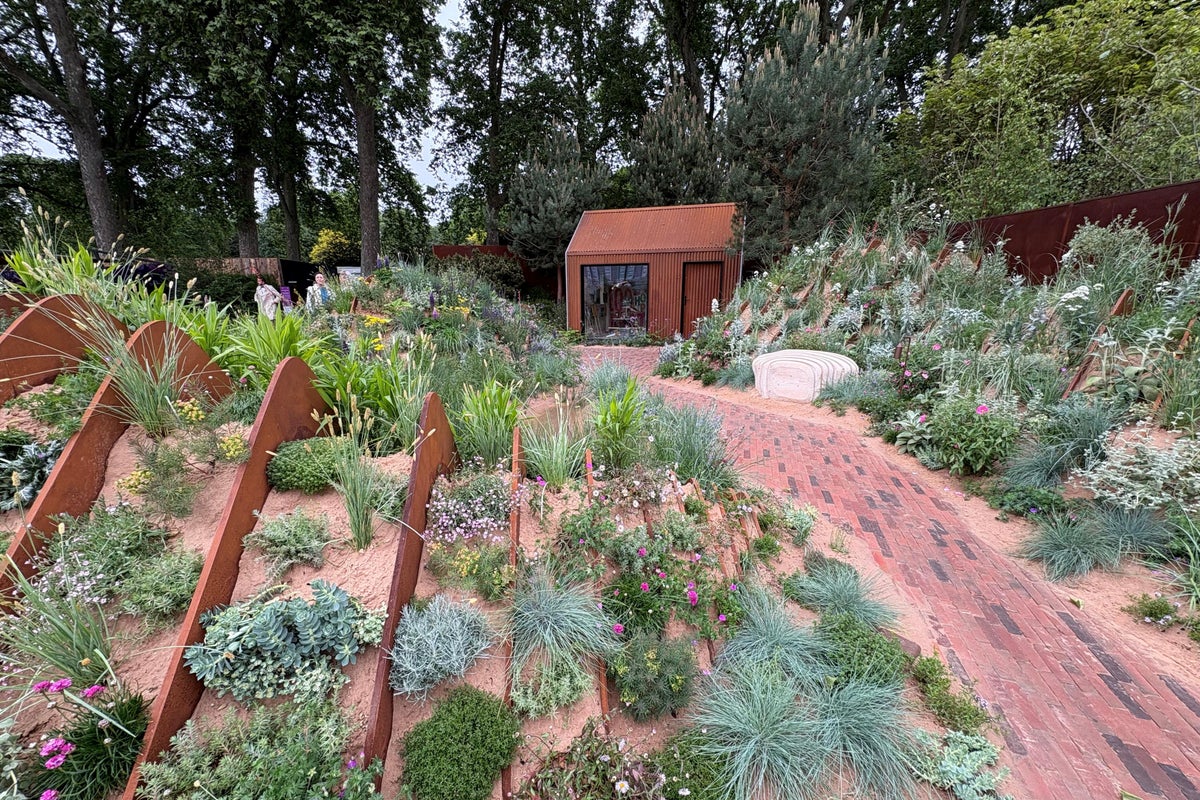
Climate-resilient gardens, Mediterranean-style planting and a focus on making your outdoor space a sanctuary will all be trends that gardeners will take away with them from this year’s RHS Chelsea Flower Show, experts are predicting.
The importance of local artisans and sustainable building materials such as rustic timber and mycelium walls, formed in one show garden from recycled waste material from previous RHS show gardens, are among the highlights, as designers move away from using concrete in hard landscaping.
Jo Thompson, who has designed The Glasshouse Garden, reckons plants, rather than hard landscaping, will become the stars of the show, as gardeners move towards more planting.
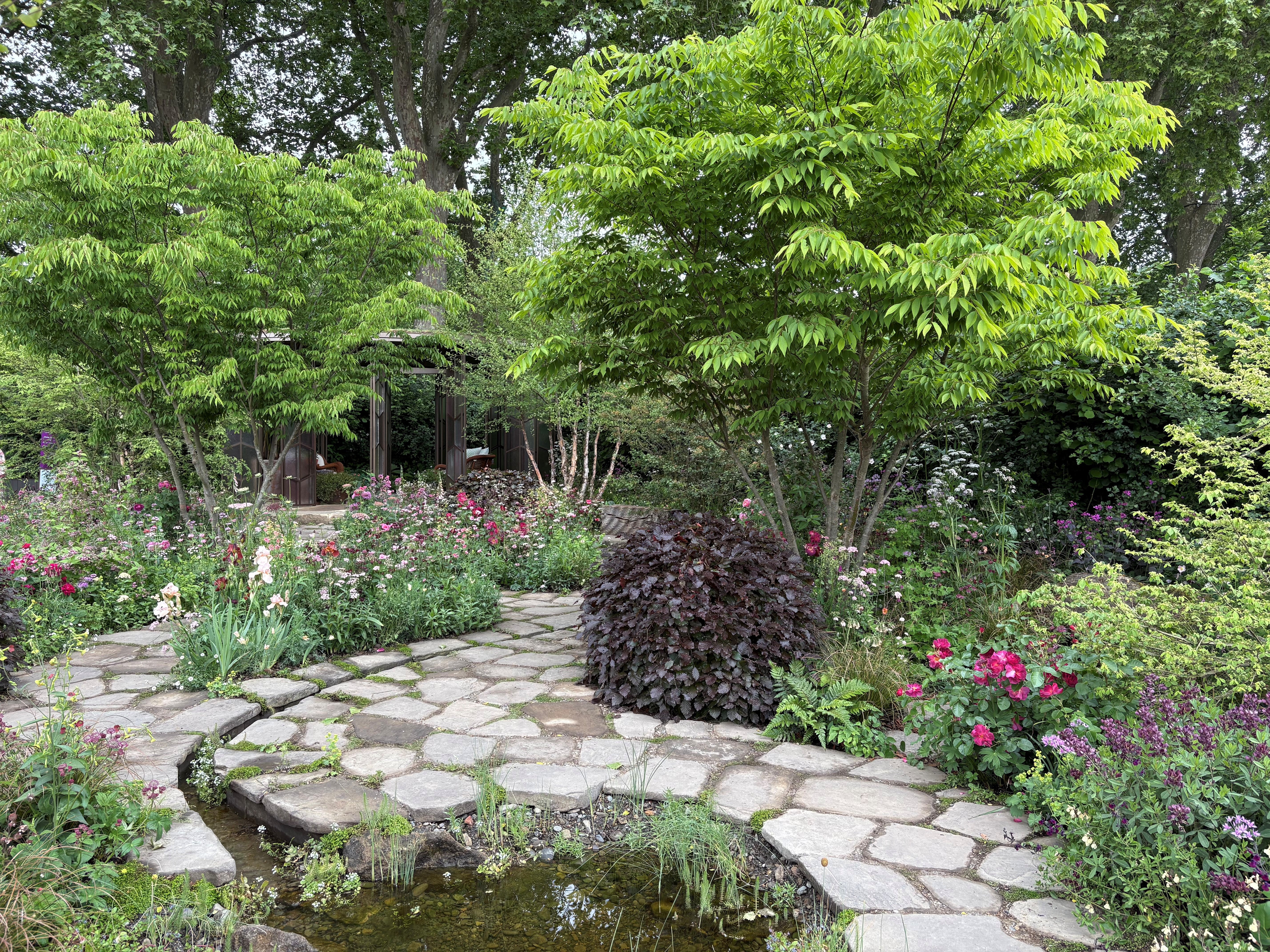
“We shouldn’t be using too much hard landscaping. If you can, use trees and shrubs as architecture and structure.”
Smaller show gardens continue to gain momentum, to inspire people who might just have a balcony or a small urban plot.
Some of the main trends at this year’s show include:
Climate resilience
Designs this year are looking to wild, often harsh landscapes and much planting has been selected for its resilience to changing climates.
Drought-tolerant shrubs including cistus and rosemary, and aromatic silver-leafed plants such as santolina and artemisia will be in focus – although choosing plants which can adapt to erratic weather will also be highlighted.
BBC Gardeners’ World presenter Monty Don, who has designed The RHS and BBC Radio 2 Dog Garden, says: “We are all dealing with climate change.
“And I think that whether it’s this Chelsea, or whether it’s just gardening in general, we are having to adapt to very wet winters and then dry periods, and also some pretty wet summers too. So it’s erratic.
“The good news is plants are proving more adaptable than we thought, the bad news is you can’t expect a plant that thrives in hot dry conditions to spend all winter with its roots in water. So we’re having to react to that.”
Alex Denman, a trustee of Project Giving Back, which is funding 10 show gardens in this year’s event, says: “I definitely see a trend for climate-adaptive planting and resilient gardening,” citing the sand dune planting in The Hospitalfield Arts Garden designed by Nigel Dunnett and the Mediterranean-style planting in Tom Hoblyn’s Hospice UK Garden of Compassion, featuring arbutus and luma.
Mediterranean-inspired planting
Drought-like conditions may encourage gardeners to go for Mediterranean style planting, RHS chief horticulturist Guy Barter predicts.
“There’s a Mediterranean or even desert feel to some of the gardens this year, which is very fortuitous since the British weather appears to be fixing to go into a drought mode.”
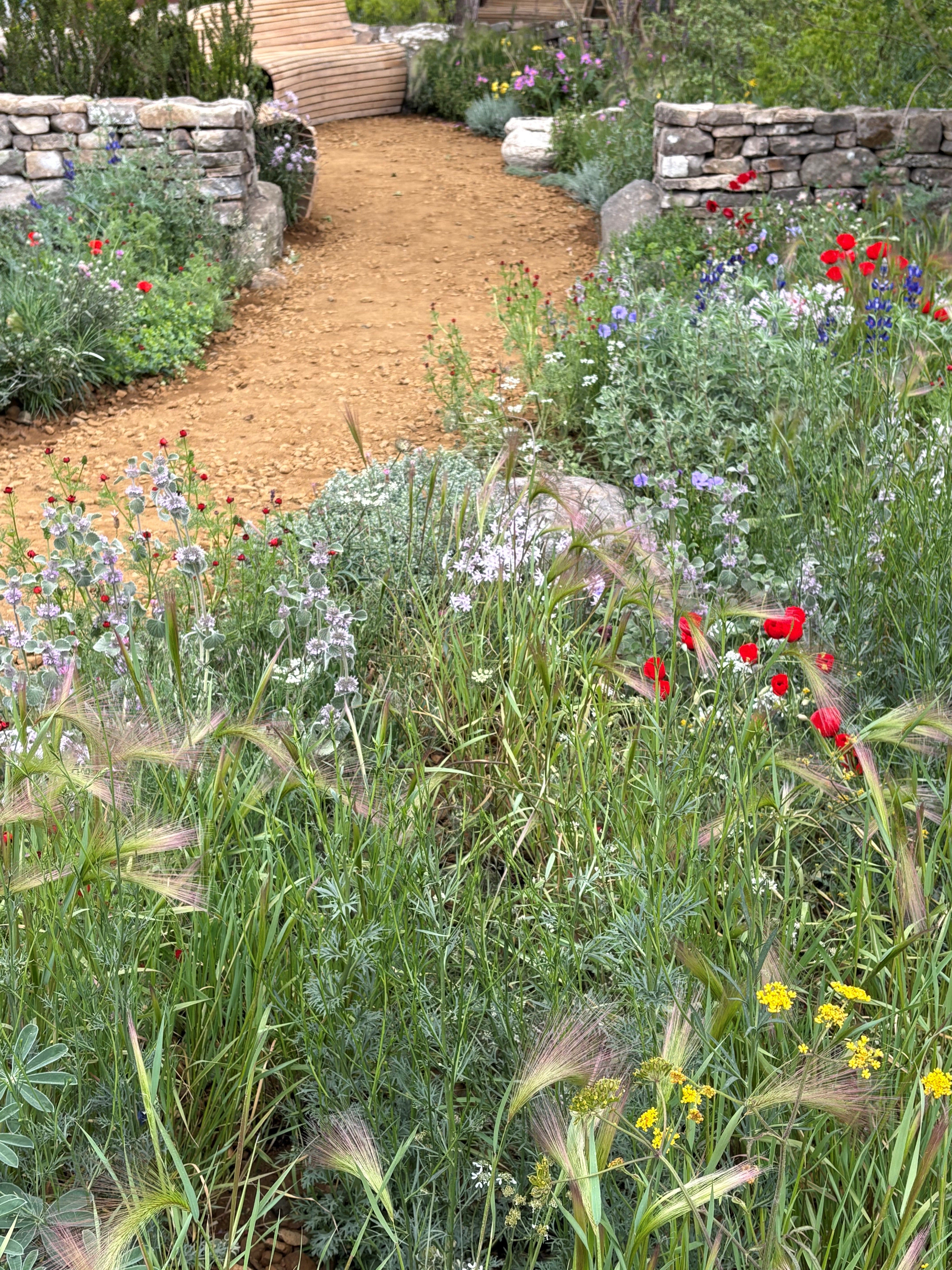
Resilient coastal planting can be seen in the Hospitalfield Arts Garden, with its series of striking sand dune-like banks.
Stand-out plants
Yellow Baptisias are popping up in show gardens and may become popular, Barter predicts.
“It’s like a lupin only it’s easier to grow and it doesn’t get lupin aphids,” he says.
Phlomis, teucrium, tree lupins and various forms of broom are also abundant, while the most common tree at the show seems to be pine, he adds. Acers are also prominent and medlars are catching on.
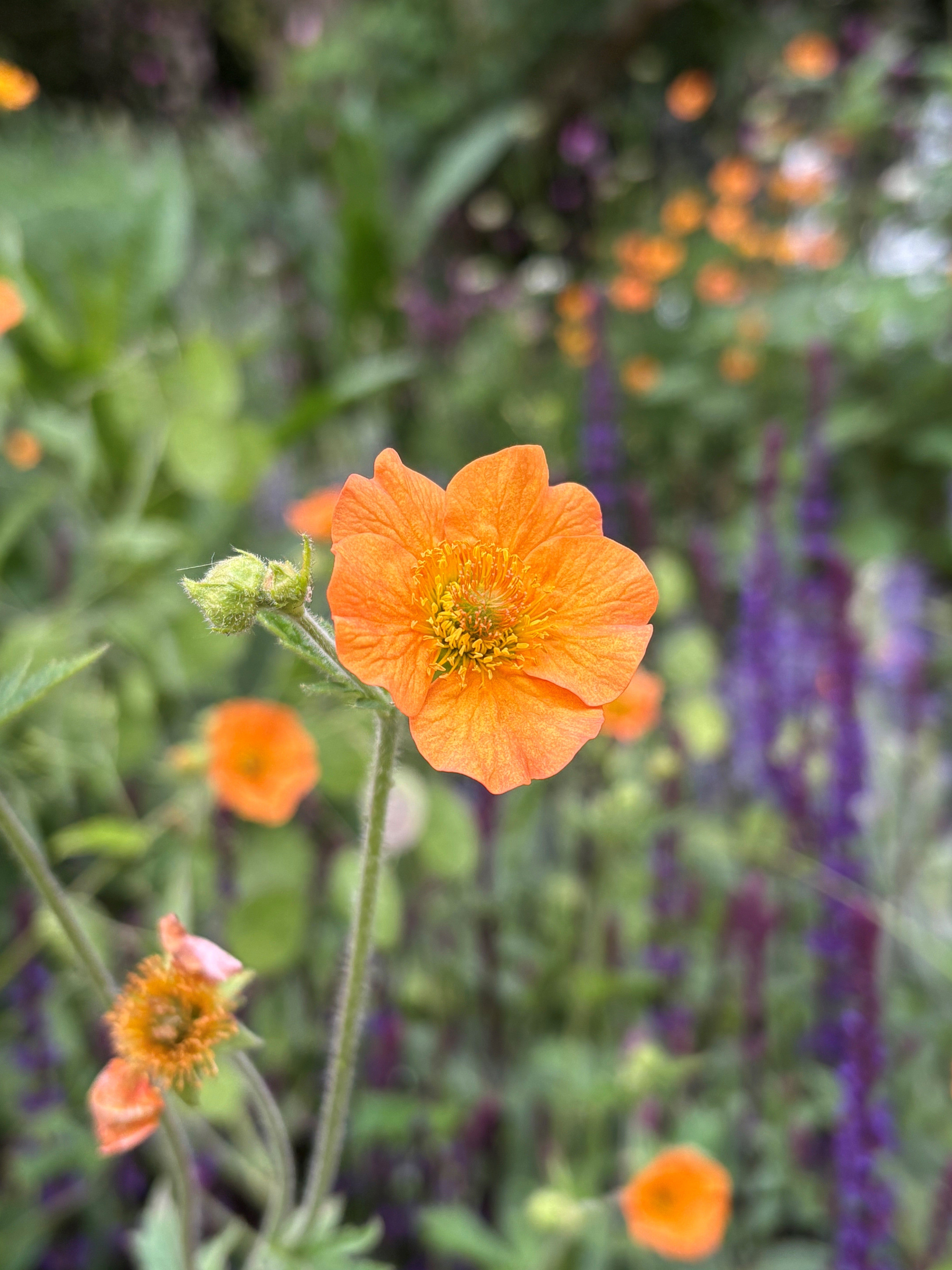
There’s also an abundance of orange geums, providing pops of colour against the purple hues of salvias and lupins.
Naturalistic planting
“I think you’ll see more wild planting in some gardens, like the King’s Trust Garden: Seeding Success and the Hospice UK garden. It’s not rewilding, but it’s very natural in its design,” says Denman.
“Instead of very formal clipped yew topiary that we used to have, using something like copper beech is a big shaggier, a bit more relaxed,” adds Thompson.
Je Ahn, co-designer of The Avanade Intelligent Garden with Tom Massey, says: “There’s a good balance of naturalistic and controlled planting. In a lot of gardens this year it seems like uncontrolled is coming through, but it has been designed.”
Artisan works
“There’s a much bigger trend to choosing locally crafted items and much more awareness of where things are coming from and supporting small artisans,” Denman observes.
Ironwork depicting wildlife scenes are beautifully demonstrated in The SongBird Survival Garden through Jeni Cairns’ bespoke metalwork motifs.
“I think it gives people inspiration to think outside of the box at the garden centre,” says Denman. “It’s about finding local makers near you – and once you start looking, you find people.”
Sustainable building materials
“There’s a lot of public awareness about doing things better, and at Chelsea they have mycelium (fungal) walls in The Pathway Garden.
“People are very much trying different materials. It’s not just concrete block walls or putting concrete in the background. Everybody’s thinking very imaginatively about how they can do things for the environment and build in a better, more sustainable way,” says Denman.
Thompson, whose show garden pavilion is made out of recycled steel and a recycled acrylic, says: “Sustainability is at the heart of this garden build. There’s no cement or concrete, it’s all lime and sand, and all the stone is reclaimed.”
Barter adds: “Underneath that veneer of plants, designers have tried to avoid using cement, they’ve used recycled timber and found things to use that are not going to be broken up and used for landfill or rubble, but can be reused.”
The dune mounds in The Hospitalfield Arts Garden have been created through timber fins with plants established in sand, gravel and other mineral materials for resilient, drought-resistant planting.
Wellbeing emphasis
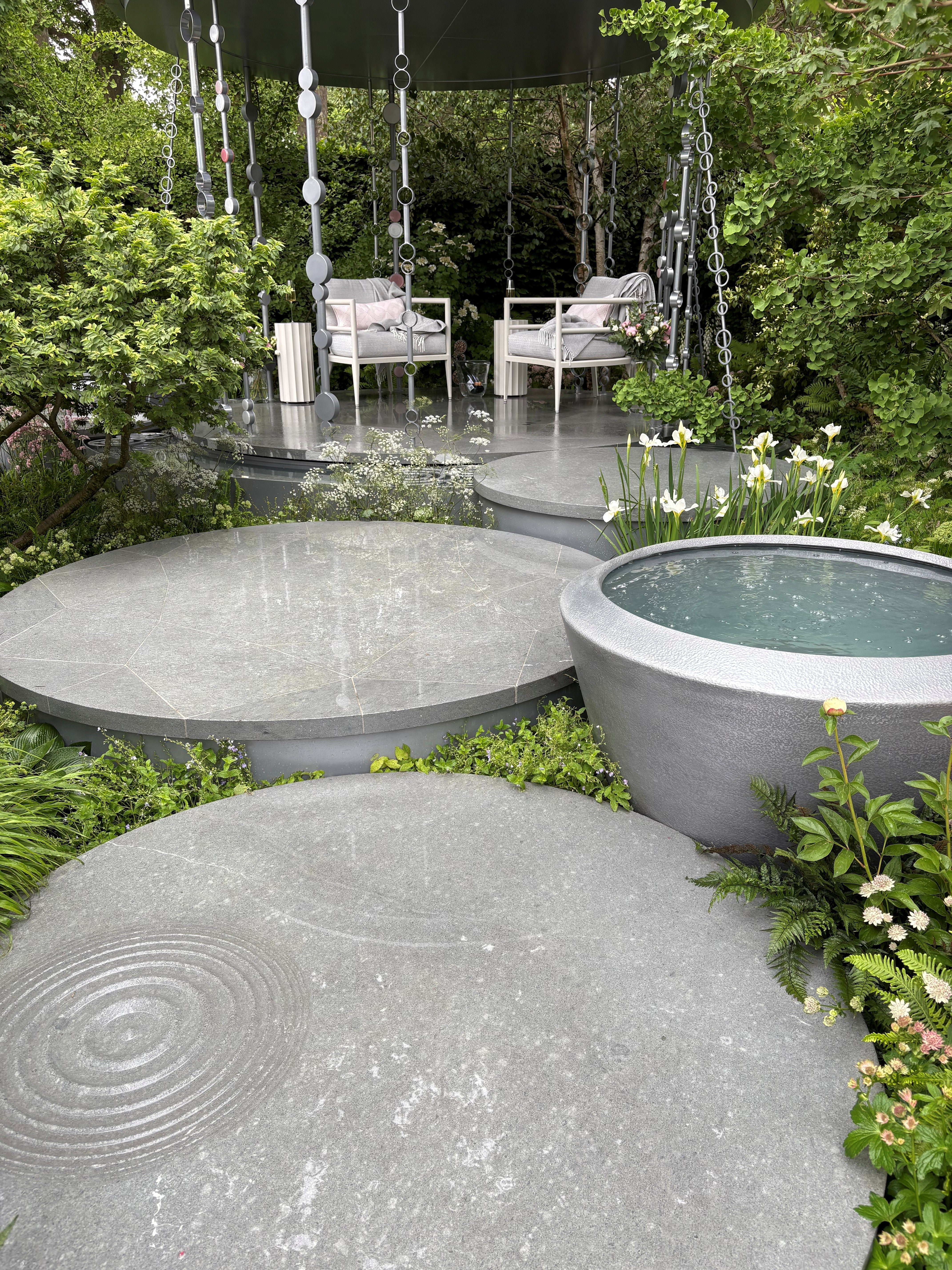
Gardeners may be taking home ideas for wellbeing, as numerous show gardens are designed for reflection and peace.
This is also true of people with smaller outdoor plots, says garden designer Robert Myers, moderator of the Balcony and Container Gardens category, who believes that after the pandemic people with small balconies or tiny garden spaces started maximising what they could get out of them. Much rich, textured, layered planting is featured.
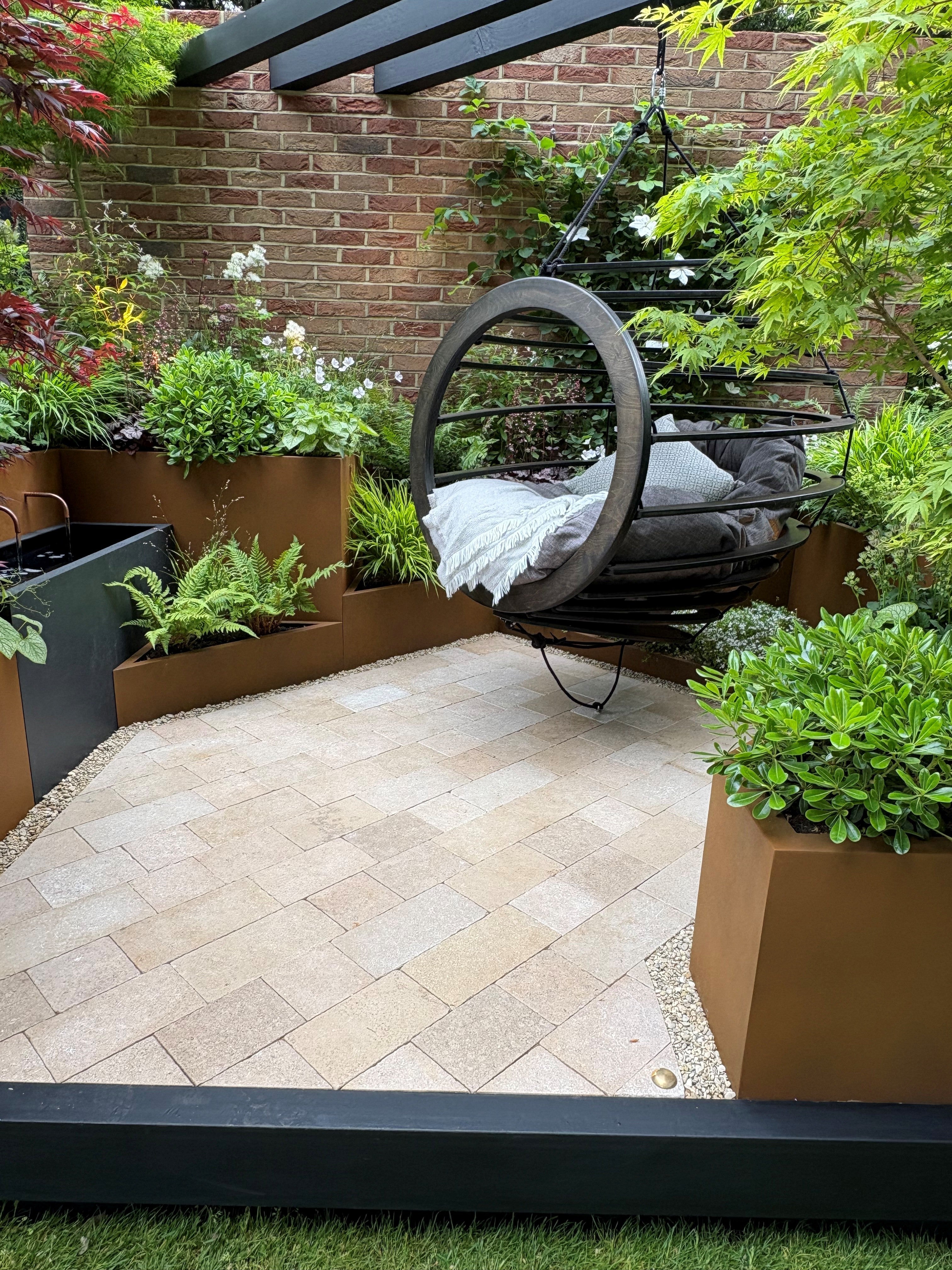
“Most of the smaller gardens are quite relaxed and informal in their planting style. There’s nothing terribly clipped or manicured. It’s much more thoughtful and reflective, with a lot of green foliage and thinking about how you occupy the space in terms of seating and there’s quite a lot of water aspects in the gardens which provide a restorative element,” he says.
Zoning different parts of the garden so it’s not all on display at the same time will be important, Denman offers. It may be as simple as placing a garden bench in a secluded spot and having planting all around it, just somewhere to create a sanctuary.
Focus on the future
We may look to install more innovative elements such as AI monitors to check on the needs of our climate-resilient plants and trees, as highlighted by Tom Massey and Je Ahn in The Avanade Intelligent Garden.
Chelsea Flower Show to feature sweet tribute to King and Queen’s dogs
How a Weymouth fish market became one of the UK’s best seafood spots
5 new podcasts to listen to this week
Michelle Obama says Ellen DeGeneres pointed out a problem with her exercise routine
Influencer Saffron Barker is ‘grateful to be alive’ after robbery on US road trip
Live in an area built mainly from concrete? You might develop this condition







